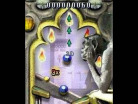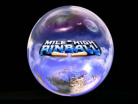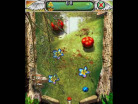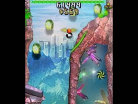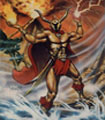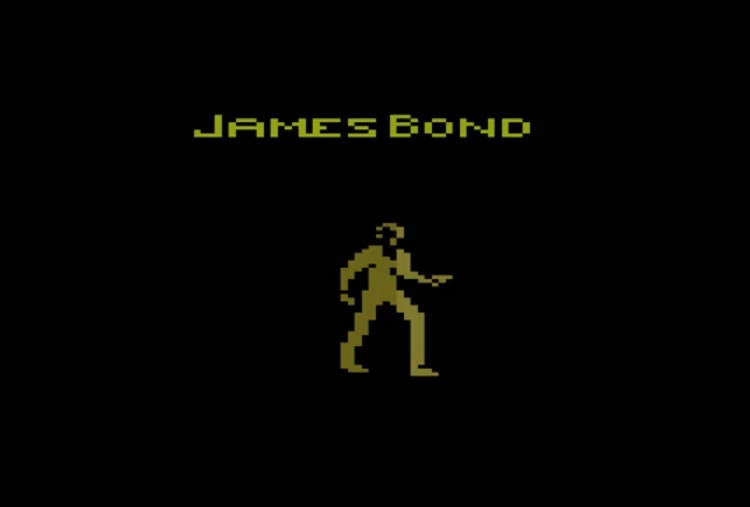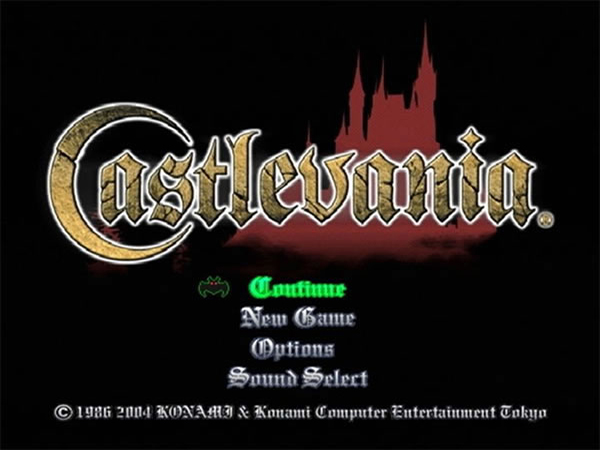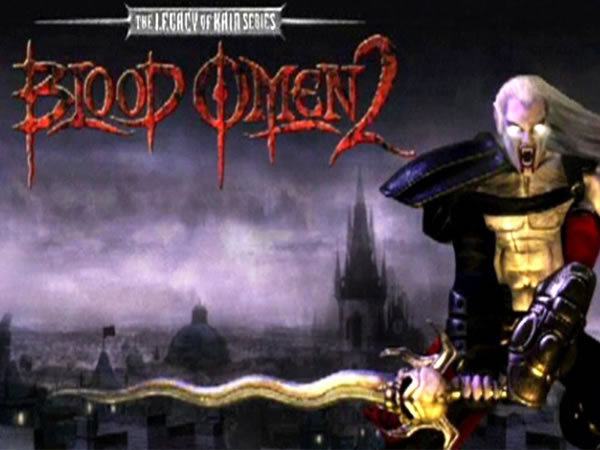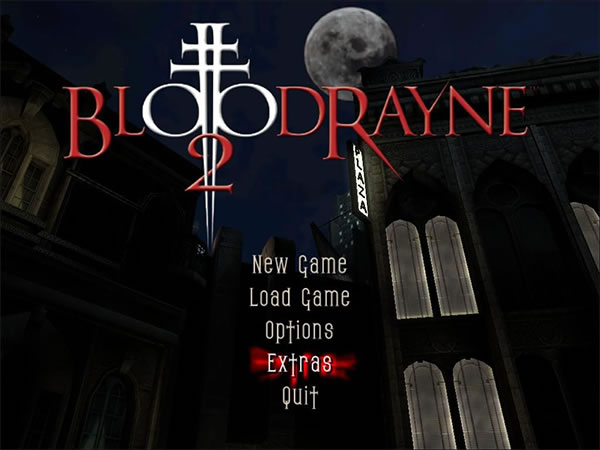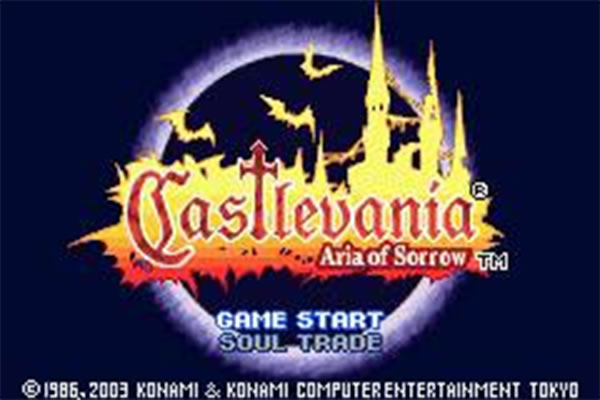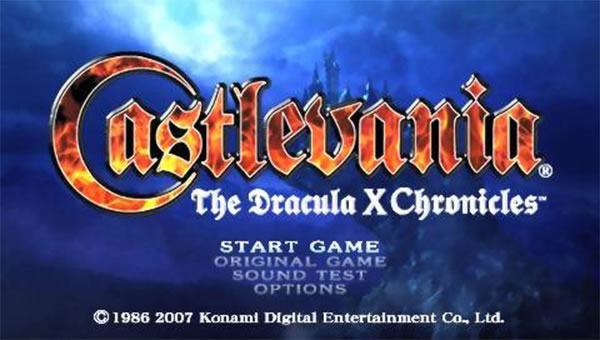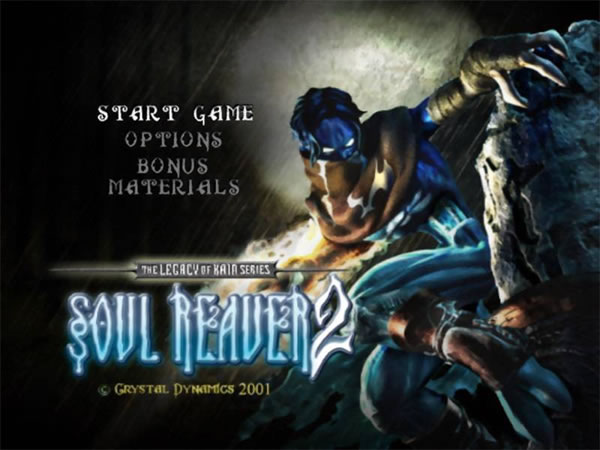- CLASSIC MAGAZINES
- REVIEW CREW
A show recapping what critics thought back
when classic games first came out! - NEXT GENERATION'S BEST & WORST
From the worst 1-star reviews to the best
5-stars can offer, this is Next Generation! - NINTENDO POWER (ARCHIVE)
Experience a variety of shows looking at the
often baffling history of Nintendo Power! - MAGAZINE RETROSPECTIVE
We're looking at the absolutely true history of
some of the most iconic game magazines ever! - SUPER PLAY'S TOP 600
The longest and most ambitious Super NES
countdown on the internet! - THEY SAID WHAT?
Debunking predictions and gossip found
in classic video game magazines! - NEXT GENERATION UNCOVERED
Cyril is back in this spin-off series, featuring the
cover critic review the art of Next Generation! - HARDCORE GAMER MAGAZING (PDF ISSUES)
Download all 36 issues of Hardcore Gamer
Magazine and relive the fun in PDF form!
- REVIEW CREW
- ELECTRONIC GAMING MONTHLY
- ELECTRONIC GAMING MONTHLY RANKS
From Mario to Sonic to Street Fighter, EGM
ranks classic game franchises and consoles! - ELECTRONIC GAMING MONTHLY BEST & WORST
Counting down EGM’s best and worst reviews
going year by year, from 1989 – 2009! - ELECTRONIC GAMING BEST & WORST AWARDS
11-part video series chronicling the ups and
downs of EGM’s Best & Worst Awards!
- ELECTRONIC GAMING MONTHLY RANKS
- GAME HISTORY
- GAME OVER: STORY BREAKDOWNS
Long-running series breaking down game
stories and analyzing their endings! - A BRIEF HISTORY OF GAMING w/ [NAME HERE]
Real history presented in a fun and pithy
format from a variety of game historians! - THE BLACK SHEEP
A series looking back at the black sheep
entries in popular game franchises! - INSTANT EXPERT
Everything you could possibly want to know
about a wide variety of gaming topics! - FREEZE FRAME
When something familiar happens in the games
industry, we're there to take a picture! - I'VE GOT YOUR NUMBER
Learn real video game history through a series
of number-themed episodes, starting at zero! - GREAT MOMENTS IN BAD ACTING
A joyous celebration of some of gaming's
absolute worst voice acting!
- GAME OVER: STORY BREAKDOWNS
- POPULAR SHOWS
- DG NEWS w/ LORNE RISELEY
Newsman Lorne Riseley hosts a regular
series looking at the hottest gaming news! - REVIEW REWIND
Cyril replays a game he reviewed 10+ years
ago to see if he got it right or wrong! - ON-RUNNING FEUDS
Defunct Games' longest-running show, with
editorials, observations and other fun oddities! - DEFUNCT GAMES QUIZ (ARCHIVE)
From online quizzes to game shows, we're
putting your video game knowledge to the test!- QUIZ: ONLINE PASS
Take a weekly quiz to see how well you know
the news and current gaming events! - QUIZ: KNOW THE GAME
One-on-one quiz show where contestants
find out if they actually know classic games! - QUIZ: THE LEADERBOARD
Can you guess the game based on the classic
review? Find out with The Leaderboard!
- QUIZ: ONLINE PASS
- DEFUNCT GAMES VS.
Cyril and the Defunct Games staff isn't afraid
to choose their favorite games and more! - CYRIL READS WORLDS OF POWER
Defunct Games recreates classic game
novelizations through the audio book format!
- DG NEWS w/ LORNE RISELEY
- COMEDY
- GAME EXPECTANCY
How long will your favorite hero live? We crunch
the numbers in this series about dying! - VIDEO GAME ADVICE
Famous game characters answer real personal
advice questions with a humorous slant! - FAKE GAMES: GUERILLA SCRAPBOOK
A long-running series about fake games and
the people who love them (covers included)! - WORST GAME EVER
A contest that attempts to create the worst
video game ever made, complete with covers! - LEVEL 1 STORIES
Literature based on the first stages of some
of your favorite classic video games! - THE COVER CRITIC
One of Defunct Games' earliest shows, Cover
Critic digs up some of the worst box art ever! - COMMERCIAL BREAK
Take a trip through some of the best and
worst video game advertisements of all time! - COMIC BOOK MODS
You've never seen comics like this before.
A curious mix of rewritten video game comics!
- GAME EXPECTANCY
- SERIES ARCHIVE
- NINTENDO SWITCH ONLINE ARCHIVE
A regularly-updated list of every Nintendo
Switch Online release, plus links to review! - PLAYSTATION PLUS CLASSIC ARCHIVE
A comprehensive list of every PlayStation
Plus classic release, including links! - RETRO-BIT PUBLISHING ARCHIVE
A regularly-updated list of every Retro-Bit
game released! - REVIEW MARATHONS w/ ADAM WALLACE
Join critic Adam Wallace as he takes us on a
classic review marathon with different themes!- DEFUNCT GAMES GOLF CLUB
Adam Wallace takes to the links to slice his way
through 72 classic golf game reviews! - 007 IN PIXELS
Adam Wallace takes on the world's greatest spy
as he reviews 15 weeks of James Bond games! - A SALUTE TO VAMPIRES
Adam Wallace is sinking his teeth into a series
covering Castlevania, BloodRayne and more! - CAPCOM'S CURSE
Adam Wallace is celebrating 13 days of Halloween
with a line-up of Capcom's scariest games! - THE FALL OF SUPERMAN
Adam Wallace is a man of steel for playing
some of the absolute worst Superman games! - THE 31 GAMES OF HALLOWEEN
Adam Wallace spends every day of October afraid
as he reviews some of the scariest games ever! - 12 WEEKS OF STAR TREK
Adam Wallace boldly goes where no critic has
gone before in this Star Trek marathon!
- DEFUNCT GAMES GOLF CLUB
- DAYS OF CHRISTMAS (ARCHIVE)
Annual holiday series with themed-episodes
that date all the way back to 2001!- 2015: 30 Ridiculous Retro Rumors
- 2014: 29 Magazines of Christmas
- 2013: 29 Questionable Power-Ups of Christmas
- 2012: 34 Theme Songs of Christmas
- 2011: 32 Game Endings of Christmas
- 2010: 31 Bonus Levels of Christmas
- 2009: 30 Genres of Christmas
- 2008: 29 Controls of Christmas
- 2007: 34 Cliches of Christmas
- 2006: 33 Consoles of Christmas
- 2005: 32 Articles of Christmas
- 2004: 31 Websites of Christmas
- 2003: 29 Issues of Christmas
- 2002: 28 Years of Christmas
- 2001: 33 Days of Christmas
- NINTENDO SWITCH ONLINE ARCHIVE
- REVIEW ARCHIVE
- FULL ARCHIVE
Mile High Pinball
I love pinball; I always have and always will. I've owned my very own machine for eight years now and even after I paid thousands for it I still play it to this day (as do most people who visit me). I love video pinball games as well (games like Alien Crush), but no matter how good a video pinball game is its never quite the same as playing using a mechanical machine your standing in front of to play.
Mile High Pinball for the N-Gage manages to find a pretty brilliant solution of sorts to the problem. Instead of replicating the arcade pinball experience, the game takes the mechanics of pinball (flippers, silver balls, bumpers, etc.), but transports them to a design that could not be done with a real-world pinball machine. You, the pinball player, must reach the top of a mile-high pinball table, stretched across more than 80 individual screens, each with different obstacles set-ups, background images, and in-board goals.
Nintendo attempted an adventure-style pinball game with Mario Pinball Land, but I thought the game ultimately failed from overly difficult board design. The horizontal nature of the GBA screen didn't help matters much, either. However, the vertically oriented N-Gage screen recreates a small pinball table nicely. With flippers usually placed on the bottom of the screen, you have ample room to bounce the ball around and satisfy board-specific goals, like hitting specific objects or rolling over on-screen enemies.
When you meet the goals for a board, you move up to the next one. If you fail, however, you're dropped back down one or two screens and must play your way back up. The idea of multiple tables strung together keeps things fresh, which also alleviates another problem with a lot of video game pinball titles. They usually only include two or three boards, and after a while, it can get old. However, there is something to be said about the irritation of finally clearing a tough board, only to drop back down to it after a dumb mistake. On a few occasions, I got somewhat disgusted with the game in this regard, but the curiosity to see higher screens kept me going.
Even though this game is more goal-oriented, Mile High doesn't completely abandon some of the scoring conventions of regular pinball. The game is soaked with multipliers that can send your score into the stratosphere. There are also a few whammy power-ups that you want to avoid. One particularly annoying one turns your ball invisible, leaving you to pound on the flippers in vain. Inevitably, I always lost a screen or two when this happened. You are also able to collect coins, which will allow you to buy goods in a shop.
The perceived ball physics have great effect on a pinball game, and in Mile High you don't really get an approximation of real-world sensitivity. Things feel a little mechanical/mathematical, instead of organic. But considering that Mile High is more about completing challenges than going for giant multipliers and rolling up ramps, the need for slightly predictable ball arcs and trajectories does seem to somewhat counter this.
Mile High Pinball does feature multiplayer where you compete with a friend to get to the highest point of the Mile High tower. The Arena is set-up to let players create their own unique tables and upload them as a challenge to other players. Both are very solid additions that add to an already entertaining game.
Mile High pinball is another solid N-Gage game that capitalizes on the strengths of the system (even though N-Gage detractors may beg to differ), but will woefully not get the exposure it deserves. Mile High's take on video pinball is smart and playable, flanked by good graphics and a decent soundtrack. This is a smart mobile game and deserves to be played by anyone who owns an N-Gage or loves pinball
Mile High Pinball for the N-Gage manages to find a pretty brilliant solution of sorts to the problem. Instead of replicating the arcade pinball experience, the game takes the mechanics of pinball (flippers, silver balls, bumpers, etc.), but transports them to a design that could not be done with a real-world pinball machine. You, the pinball player, must reach the top of a mile-high pinball table, stretched across more than 80 individual screens, each with different obstacles set-ups, background images, and in-board goals.
Nintendo attempted an adventure-style pinball game with Mario Pinball Land, but I thought the game ultimately failed from overly difficult board design. The horizontal nature of the GBA screen didn't help matters much, either. However, the vertically oriented N-Gage screen recreates a small pinball table nicely. With flippers usually placed on the bottom of the screen, you have ample room to bounce the ball around and satisfy board-specific goals, like hitting specific objects or rolling over on-screen enemies.
When you meet the goals for a board, you move up to the next one. If you fail, however, you're dropped back down one or two screens and must play your way back up. The idea of multiple tables strung together keeps things fresh, which also alleviates another problem with a lot of video game pinball titles. They usually only include two or three boards, and after a while, it can get old. However, there is something to be said about the irritation of finally clearing a tough board, only to drop back down to it after a dumb mistake. On a few occasions, I got somewhat disgusted with the game in this regard, but the curiosity to see higher screens kept me going.
Even though this game is more goal-oriented, Mile High doesn't completely abandon some of the scoring conventions of regular pinball. The game is soaked with multipliers that can send your score into the stratosphere. There are also a few whammy power-ups that you want to avoid. One particularly annoying one turns your ball invisible, leaving you to pound on the flippers in vain. Inevitably, I always lost a screen or two when this happened. You are also able to collect coins, which will allow you to buy goods in a shop.
The perceived ball physics have great effect on a pinball game, and in Mile High you don't really get an approximation of real-world sensitivity. Things feel a little mechanical/mathematical, instead of organic. But considering that Mile High is more about completing challenges than going for giant multipliers and rolling up ramps, the need for slightly predictable ball arcs and trajectories does seem to somewhat counter this.
Mile High Pinball does feature multiplayer where you compete with a friend to get to the highest point of the Mile High tower. The Arena is set-up to let players create their own unique tables and upload them as a challenge to other players. Both are very solid additions that add to an already entertaining game.
Mile High pinball is another solid N-Gage game that capitalizes on the strengths of the system (even though N-Gage detractors may beg to differ), but will woefully not get the exposure it deserves. Mile High's take on video pinball is smart and playable, flanked by good graphics and a decent soundtrack. This is a smart mobile game and deserves to be played by anyone who owns an N-Gage or loves pinball
HOME |
CONTACT |
NOW HIRING |
WHAT IS DEFUNCT GAMES? |
NINTENDO SWITCH ONLINE |
RETRO-BIT PUBLISHING
Retro-Bit |
Switch Planet |
The Halcyon Show |
Same Name, Different Game |
Dragnix |
Press the Buttons
Game Zone Online | Hardcore Gamer | The Dreamcast Junkyard | Video Game Blogger
Dr Strife | Games For Lunch | Mondo Cool Cast | Boxed Pixels | Sega CD Universe | Gaming Trend
Game Zone Online | Hardcore Gamer | The Dreamcast Junkyard | Video Game Blogger
Dr Strife | Games For Lunch | Mondo Cool Cast | Boxed Pixels | Sega CD Universe | Gaming Trend
Copyright © 2001-2025 Defunct Games
All rights reserved. All trademarks are properties of their respective owners.
All rights reserved. All trademarks are properties of their respective owners.






